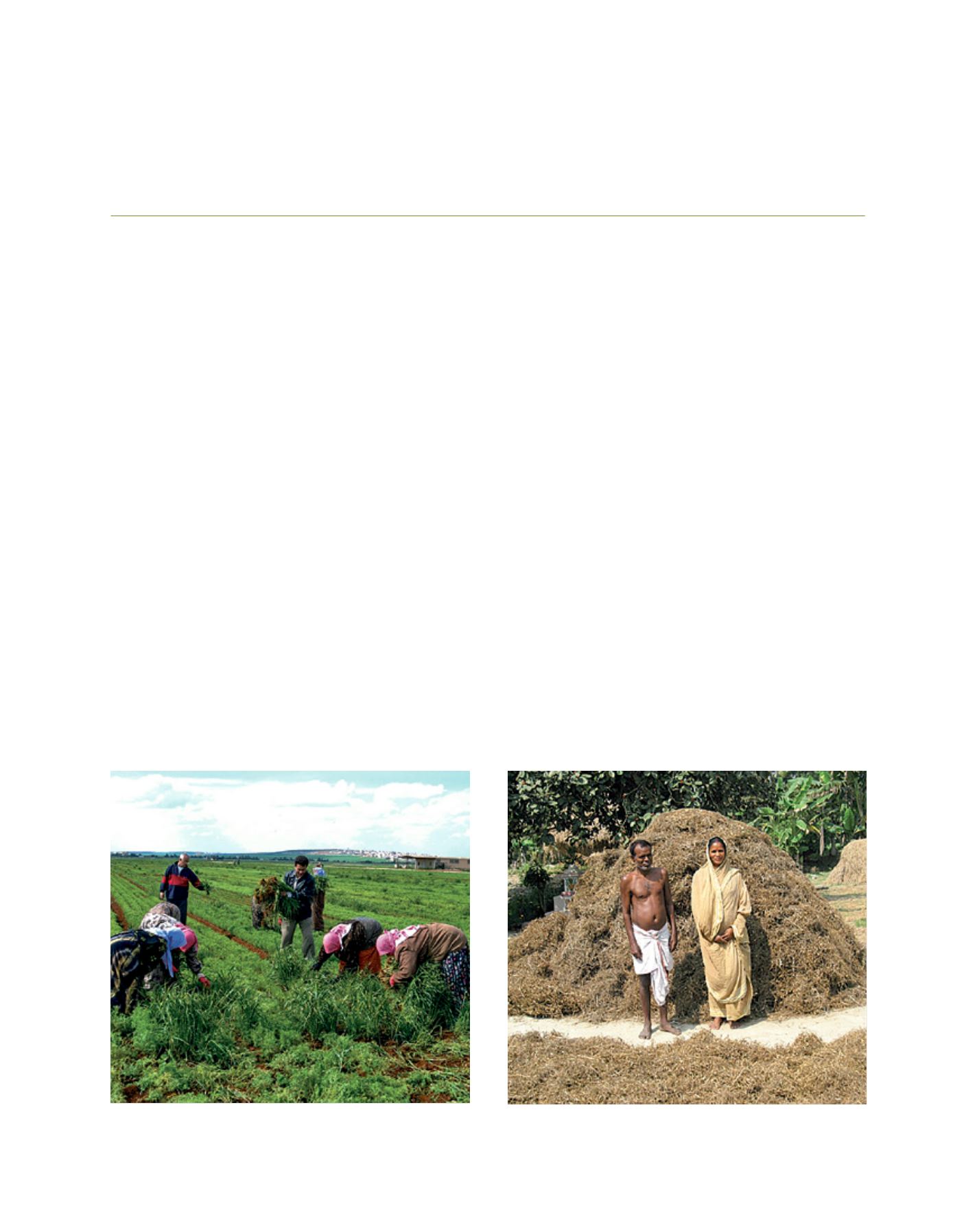

[
] 191
The environmental, social and economic
sustainability of family farms in the dry areas
Dr Mahmoud Solh, Director General, International Center for Agricultural Research in the Dry Areas
A
pproximately 75-80 per cent of the food produced
in the drylands results from the hard work of
women, men and children cultivating small plots
of land. Agriculture is the main livelihood and source of
food for these family units. While some small family farms
enjoy successful production units, many others are nega-
tively impacted by changing environmental, social and
economic conditions that threaten their existence.
The 2014 International Year of Family Farming is revital-
izing the emphasis placed by researchers, policymakers
and development actors on the importance of family farms.
Such emphasis is highlighting the need to integrate family
farms into equitable and sustainable development agendas.
Various successful approaches, exemplified by case studies,
are capable of enhancing the potential of small family farms in
dry areas and improving the quality of the lives of the women,
men and children that constitute them.
Dry areas cover over 41 per cent of the Earth’s surface and
are home to about 2.1 billion people, many of whom depend
on land, water, livestock, rangelands, trees and fish to sustain
their livelihoods. About 16 per cent of the population in the
drylands lives in chronic poverty. These areas are experiencing
rapid population growth and high urbanization. For example,
according to the World Bank, the 2006-2011 drought in
north-east Syria caused thousands of small herders and small
farmers to migrate to urban areas, swelling the urban slums
and potentially contributing to social and political unrest.
Social and political unrest, coupled with weak governance,
negatively impacts food security. Additionally, significant gender
gaps in access to livelihood opportunities, large youth popula-
tions, and the world’s highest unemployment rate, particularly
for the youth and for women, increase the vulnerability of the
dry areas to generational poverty. According to the International
Labour Organization, unemployment among the youth in North
Africa and the Middle East is 23.6 per cent and 25.1 per cent
respectively, compared to a world average of 12.6 per cent.
Dry areas have limited and degrading natural resources,
particularly water. Water scarcity is one of the key limiting
factors in food production. The demands of a growing popu-
lation and their economic and social development further
exacerbate the region’s increasing water deficit. Additionally,
drylands suffer from various forms of land degradation,
including desertification and the loss of biodiversity.
Climate change is another cause for the extreme vulner-
ability of farming in dry areas. Climate change is causing more
Weeding of lentil crops is labour-intensive and a common family task in
smallholder farming
ICARDA has been working in the drylands for more than 35 years to improve
the livelihoods of small family farmers
Image: ICARDA
Image: ICARDA
D
eep
R
oots
















